Fact-checking 'Ferrari' movie: What's accurate, what isn't in Adam Driver's racing film
Spoiler alert! We're discussing plot points from the new movie "Ferrari" (in theaters now) and the real-life events on which the film is based. Stop reading now if you haven't seen it and don't want to know.
There is perhaps no more storied name in the history of auto racing than Ferrari. Auto buffs will argue that point, citing contenders for the crown ranging from Porsche to Mercedes to Bentley. Let them all rage.
The house of the Prancing Horse, based in the hamlet of Maranello, Italy, owes its reputation partly to countless racing victories and breathtaking road cars. But the real legend, often cloaked in myth, is not the machine but the man who built them, Enzo Anselmo Giuseppe Maria Ferrari, the focal point of "Ferrari."
Michael Mann's film is not a full biopic, but rather a tense and troubled slice of the automaker's life, specifically 1957, when Enzo (Adam Driver) is grappling with both bankruptcy and the dueling demands of his fierce wife Laura (Penélope Cruz) and doting mistress Lina (Shailene Woodley).
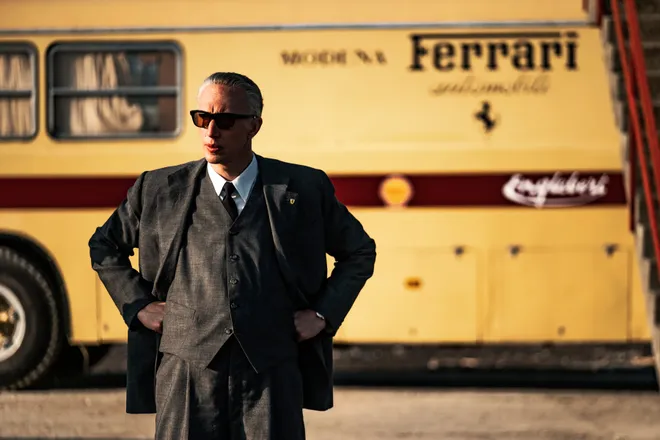
How much of "Ferrari" steers factually straight? Since the movie is drawn from auto writer Brock Yates' 1991 biography "Enzo Ferrari: The Man and the Machine," the broad strokes are spot on. But we drill down on details that warrant a closer look.
Did Enzo Ferrari really have a mistress and a secret son?
Enzo Ferrari split his affections between two women, his wife Laura Garello, whom he married at 25 in 1923, and his mistress, Lina Lardi, whom he met in the late 1930s. Enzo and Laura had a son named Alfredo, nicknamed Dino. Dino Ferrari shared his father's passion for cars and was expected to step into a leading role at Ferrari, but died from complications of muscular dystrophy at age 24 in 1956, a year before "Ferrari" is set.
Dino's death rocked Ferrari, who named a now-famous sports car after his son. But while very few knew it at the time, Ferrari also had a son with Lardi: Piero, born in 1945. Italy's then-strict laws prohibiting divorce resulted in Ferrari staying with Laura until her death in 1978, at which point he acknowledged Piero as his son. Today, Piero Ferrari, 78, is vice chairman of Ferrari.

Was the Ferrari company about to go under in 1957?
Enzo Ferrari's passion for cars started in his teens, eventually translating into a job racing for Alfa Romeo in the mid-1920s. A decade later, he left the driver's seat and managed the Alfa team, deepening his knowledge of cars and drivers in the process. In 1947, he founded his eponymous company.
'Ferrari':Would Adam Driver and Penélope Cruz want a Ferrari? You'd be surprised.
His cars quickly gained notice at races, but by 1957, the company was in precarious straits. Despite building sleek road cars for the rich and famous, Ferrari's meager factory output wasn't filling coffers that were routinely depleted by the exorbitant costs of fielding a racing team. In "Ferrari," Enzo's accountant gives him an ultimatum: win the prestigious Mille Miglia road race − a 1,000-mile sprint from the north of Italy looping south to Rome and then back north − and boost your brand to generate more sales, or sell the company.
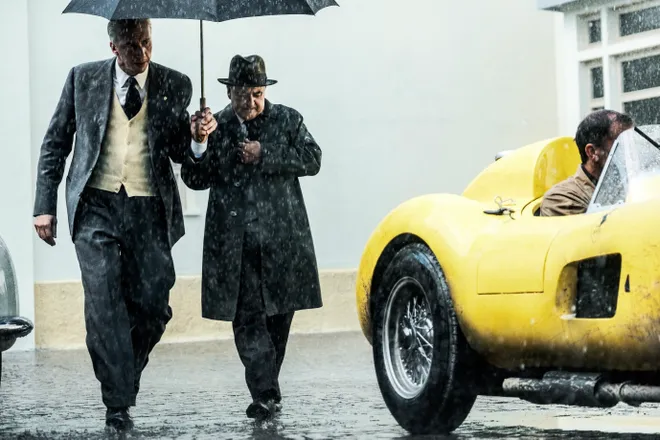
Did the tragic 1957 Mille Miglia car crash really happen?
The narrative center of "Ferrari" is the now infamous 1957 Mille Miglia race. It would run 24 times over 30 years, and for Italians, was the equivalent of the Super Bowl and Indianapolis 500 combined. Winners of the Mille Miglia became motor racing deities, among them Alberto Ascari and Stirling Moss (Ben Collins).
But the Mille Miglia crashed to an end in 1957. The winner was Scuderia Ferrari driver Piero Taruffi (Patrick Dempsey). But tragedy struck as Ferrari driver Alfonso de Portago (Gabriel Leone) died in a crash that also killed his co-driver Edmund Nelson and nine spectators, five of them children. The Mille Miglia was immediately banned by the Italian government, returning in 1977 as a rally for owners of cars built in the years when the original race ran, 1927 to 1957.
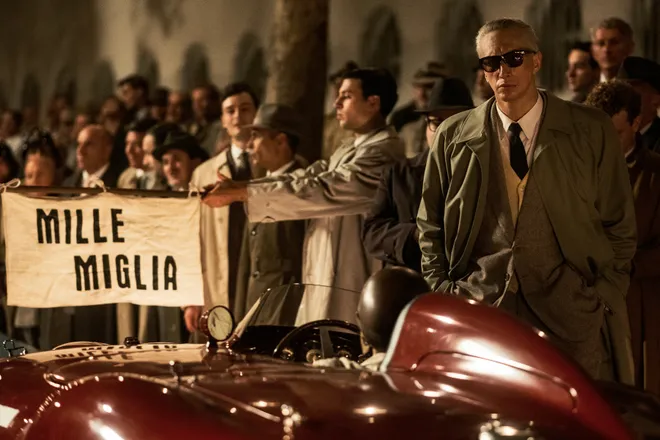
Did Enzo Ferrari really not care about his famous road cars?
In "Ferrari," we see the company patriarch act almost dismissively toward his beautiful road cars and their buyers. In one scene, he keeps a sultan waiting in the rain. The genesis of this attitude was Ferrari's roots as a race car driver as well as his passion for building winning engines. The rest was secondary, often including the driver, who Ferrari felt was there solely to serve the vehicle.
Among the more celebrated quotes attributed to the car maker are "I build engines and attach wheels to them," and "The client is not always right." Legend has it that tractor maker Ferruccio Lamborghini took his Ferrari back to Enzo to complain about a few defects, and when Ferrari ignored him, Lamborghini started his own car company. Today, new Ferrari road cars cost anywhere from $300,000 to upward of $1 million, but the most famous Ferrari of all is the rare 250 GTO built in the 1960s, which trades hands for as much as $70 million.
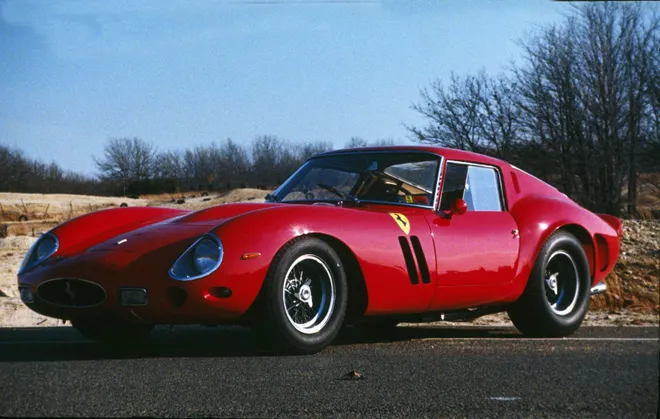
When did Enzo Ferrari die?
Ferrari's financial woes did not improve overnight simply by having one of his cars win the ill-fated 1957 Mille Miglia. A decade later, still facing mounting debts amid the growing expense of motor racing, Ferrari agreed to sell 50% of his company to Italian automotive giant Fiat. The move allowed him to still control his company while benefitting from a cash infusion that would help Ferrari solidify his team's legendary status.
Ferrari remained intimately involved with his company until the end. He died from leukemia in 1988 at age 90. An intensely private man who rarely greeted anyone without his trademark dark sunglasses, Ferrari requested that he be buried with only family by his side and that news of his death be reported two days later. In 2002, Ferrari leadership launched a top-of-the-line sports car in tribute: the Ferrari Enzo. Today, those models go for more than $3 million.
'Most amazing car I’ve ever owned':Sammy Hagar is selling his LaFerrari to highest bidder
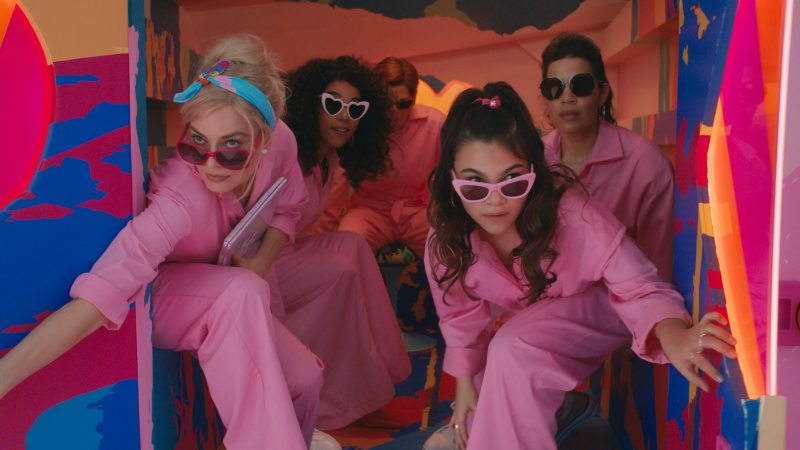
Disclaimer: The copyright of this article belongs to the original author. Reposting this article is solely for the purpose of information dissemination and does not constitute any investment advice. If there is any infringement, please contact us immediately. We will make corrections or deletions as necessary. Thank you.







